Vegetables produce in different quantities, at different times, and for different lengths of time. Often, we don’t keep our vegetables producing for as long as we could. Sometimes the reason is that we don’t understand what the plant can do, or we think it is done producing before it really is. Many plants can keep giving us fresh, delicious, nutritious produce for a lot longer than we think they can.
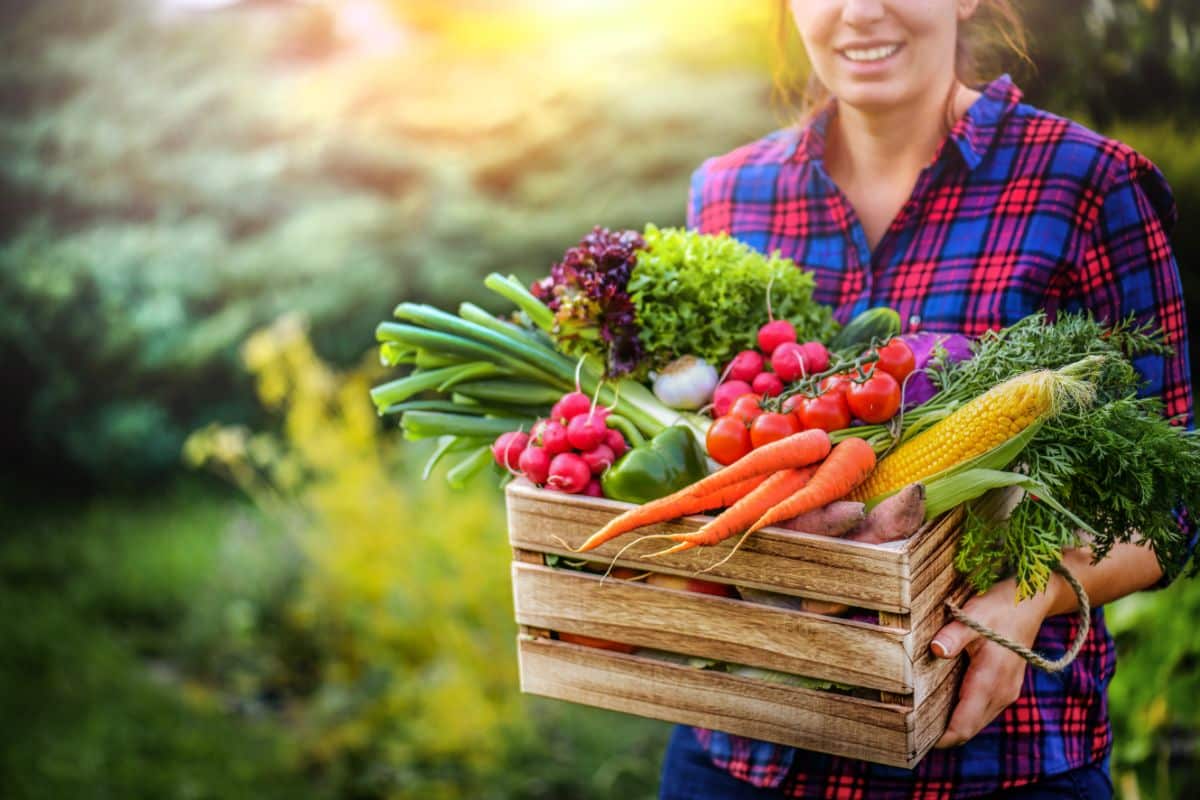
How, then, can we maximize the harvest from our homegrown vegetables? What do we need to do to keep our vegetables producing more for longer? And what vegetables are capable of giving us more than we’re taking?
Jump to:
- How to Get More Produce from Your Garden Vegetables
- 1. Know your variety’s limits—and possibilities.
- 2. Keep plants picked.
- 3. Don’t let fruits and vegetables mature on the vine.
- 4. Prevent your plants from going to seed.
- 5. Don’t give up after the first or main harvest
- 6. Wait on it when it gets hot.
- 7. Keep it watered. Consistently.
- 8. Keep on top of insects and disease.
- 9. Weed control matters.
- 10. Succession plant one-timers.
- Plants You Can Keep Producing for Long Periods
How to Get More Produce from Your Garden Vegetables
Many times when we don’t get all we can from our garden, it’s because we don’t know which of our plants are or are not able to produce continuous crops. Other times, the issue is that we’re not giving them what they need to produce the most fruit they can. Sometimes, the issue is that we aren’t managing the plants in the way they need to be managed to keep producing.
Here are ten things to know that will help you get more out of your garden:
1. Know your variety’s limits—and possibilities.
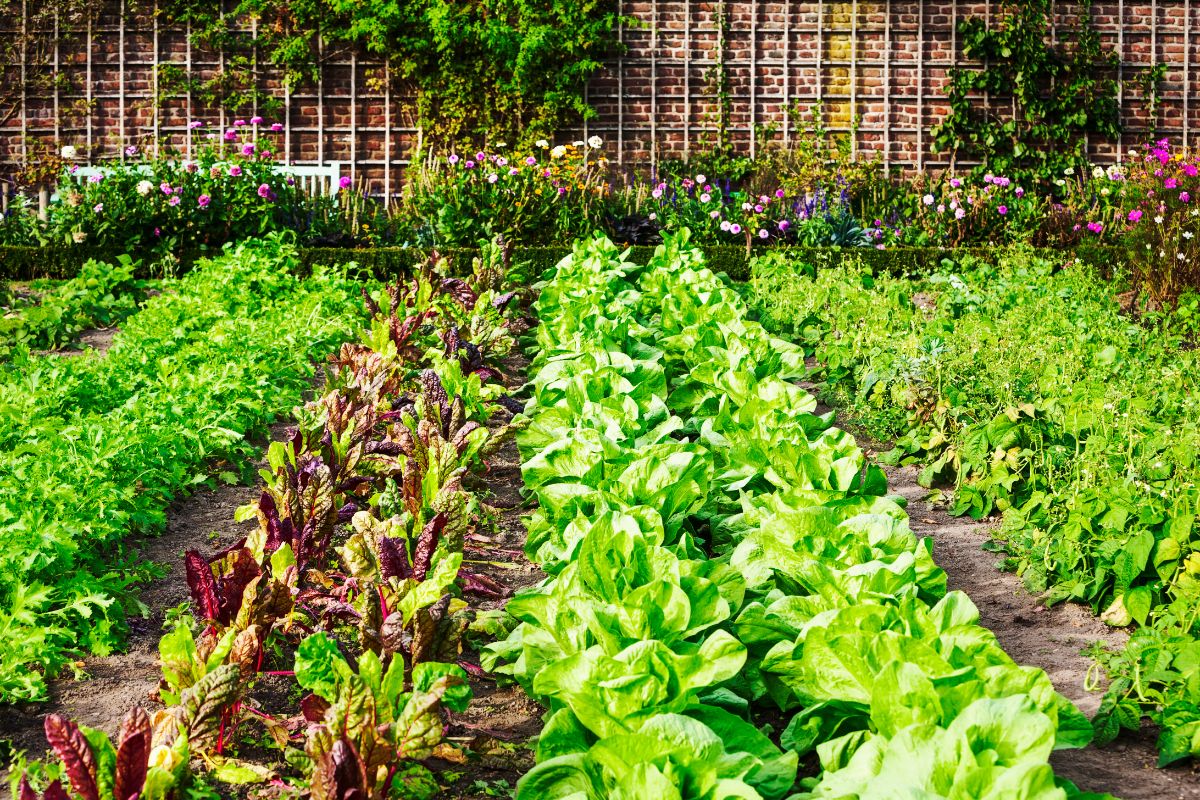
You need to know how the vegetables you plant are expected to produce. Some plants can’t be expected to produce over a long period of time because that is simply not how the plant is genetically designed to produce (or, more accurately, reproduce). Others will keep going until frost and maybe well beyond until you get a hard freeze.
Not only do you need to know the kind of vegetable you planted, but you need to know the type and variety. If it’s a one-and-done type of vegetable, like a root vegetable, or if the variety you planted is a determinate type (like determinate tomatoes or bush beans), they can only be expected to produce for a relatively short period of time.
Keep in mind that different varieties of the same type of vegetable can have different production habits. For example, a determinate tomato will produce a large flush of tomatoes for a short period. An indeterminate tomato will produce many tomatoes over a long period of time until they are stopped by frost. A semi-determinate type will fall somewhere in between.
2. Keep plants picked.
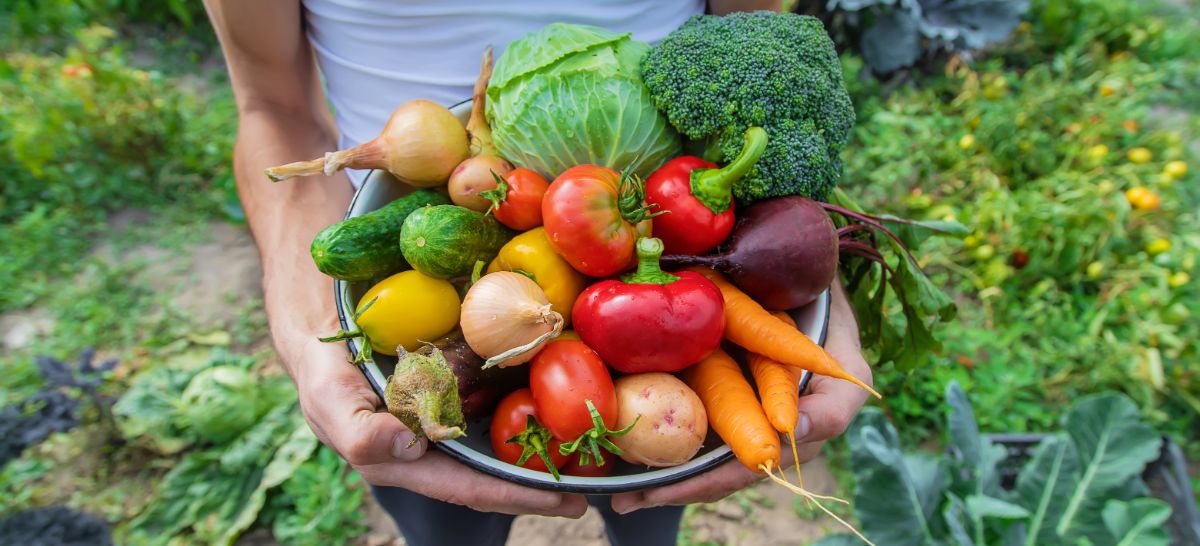
This is the number one thing you can do to keep your plants producing. When vegetables are kept picked continuously, those plants that can keep producing, will. Here, it’s all about reproduction and perpetuating the species.
Vegetable fruit because they need to produce seeds that can then fall, germinate (when conditions are right), and regrow into new vegetables. This is how vegetables propagate themselves. Most of our vegetable plants are designed, by nature, to do this in a single season—they are annuals. They grow from seed, produce fruiting bodies (the vegetables or produce we pick), go to seed all in one season, and then start again from that seed next year.
The vegetable’s purpose isn’t really to feed us. Its purpose is to continue on. The plant will continue to attempt to produce seeds by producing vegetables (fruit) until it is signaled to stop. What signals plants to stop producing vegetables and seeds? When it thinks it has done a good enough job of producing seed to continue its line.
For most of the vegetables we eat, we pick the vegetables before their seeds are old enough to reproduce—we are really picking them as immature fruit, and the plants don’t think they’ve produced enough to reproduce because the seeds they produced aren’t mature enough. As we keep taking immature vegetables from the plant, the plant will continue to try to reproduce and will grow new blossoms, new fruit, and new seeds. As long as we keep taking, the plant will keep giving, to whatever degree it is genetically programmed to do so.
However, if we let produce get old on the vine, if we let it start to reach maturity, the plant thinks it doesn’t need to produce more fruit and seed for the propagation of the next generation, and it stops producing vegetables.
Therefore, the best thing you can do to keep your vegetables producing is to coax it into continuing to try to reproduce itself. Pick vegetables at the desired peak of ripeness before they get overgrown, overripe, and too mature. Pick continuously and let the plant put its energy into giving you more produce instead of having it put its energy into feeding old vegetables and seeds.
3. Don’t let fruits and vegetables mature on the vine.
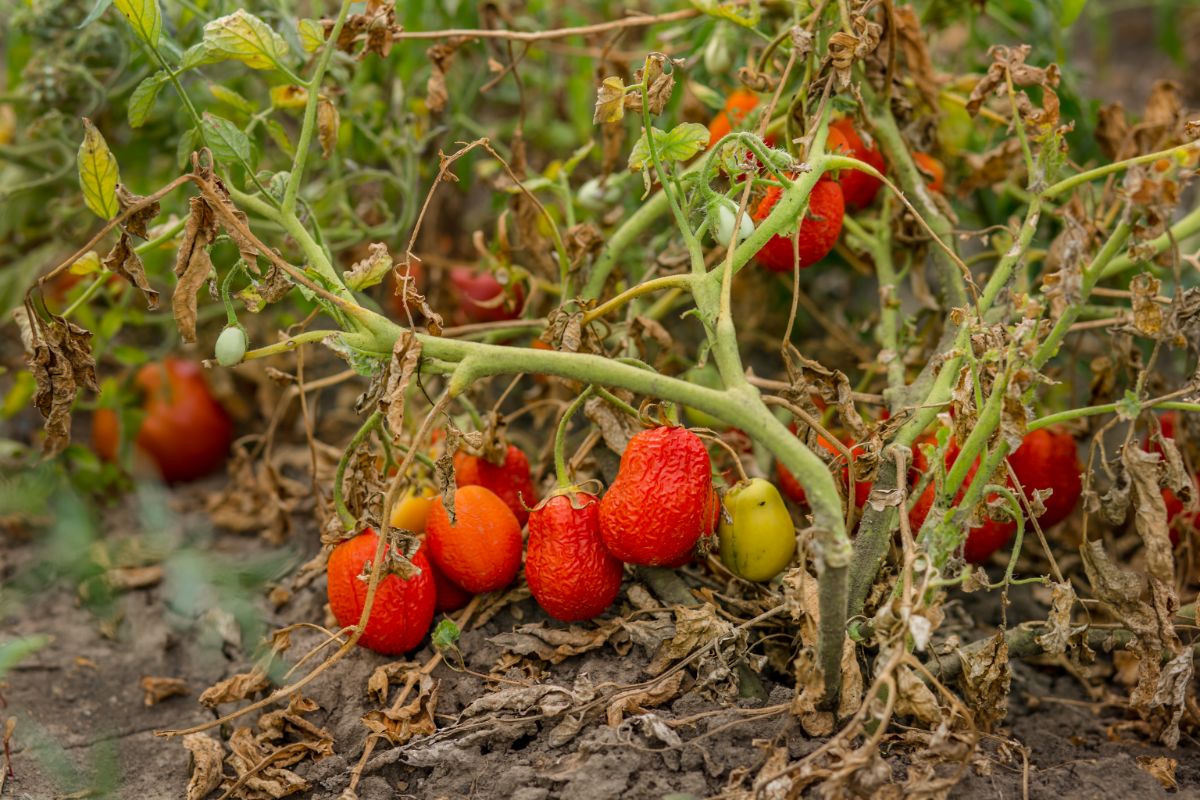
Even if you missed something and the produce is too far gone for you to want to eat it, take it off the plant. You can compost it or discard it if you wish, or if you have chickens or animals, you can treat them, but you should never just ignore over-grown vegetables and let them continue to take from the plant.
This is directly related to number two above. Overgrown vegetables are taking energy from the plant. It reduces the available resources for growing new blossoms and new vegetables, and it is signaling the plant to stop trying.
4. Prevent your plants from going to seed.
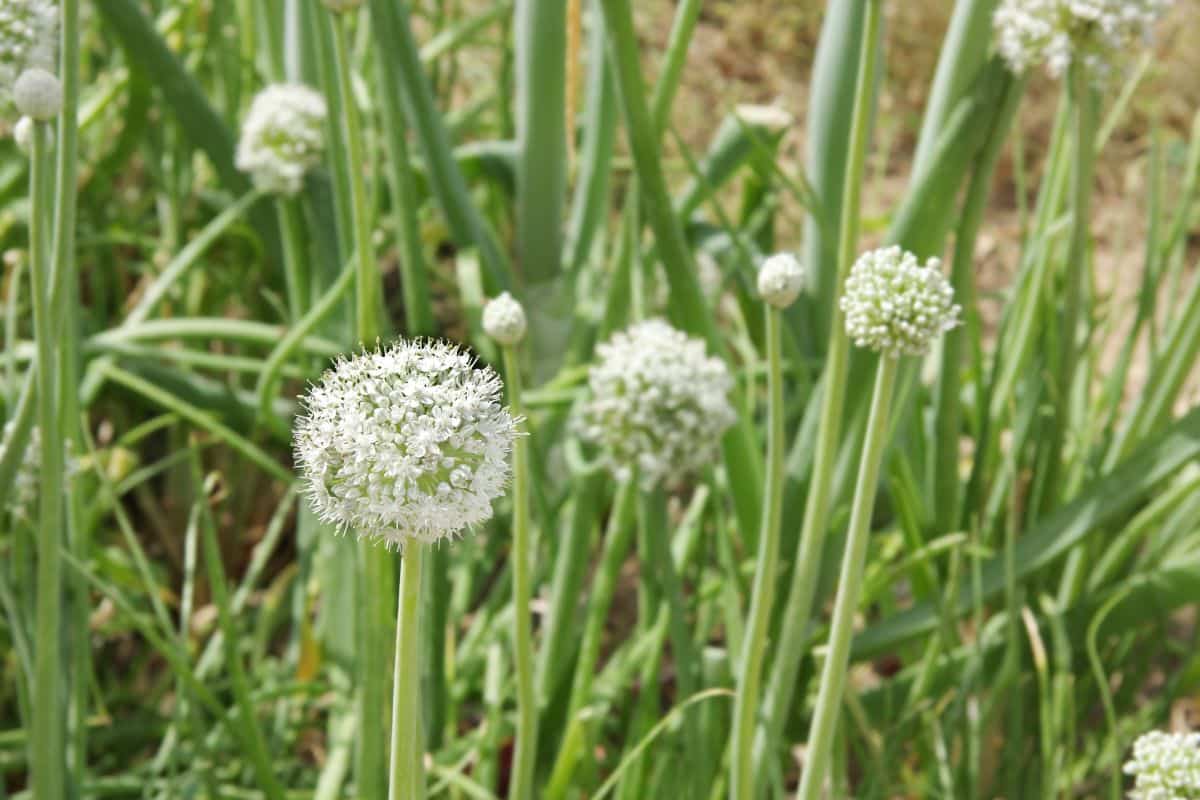
Gone to seed is the end for your vegetables. This you need to avoid at all costs if you want to keep your harvest going.
It can be difficult to keep some plants from going to seed, such as lettuce, radishes, and greens that tend to bolt when the weather gets hot. Again, harvesting is the best prevention, but management is part of this, too. Plant vegetables that tend to bolt in a cooler area of the garden, or companion plant them with something larger that can help shade them.
For plants like broccoli, don’t let the florets flower, and if they do, cut the flowering stalks off as soon as you see them. There is usually a significant amount of time that passes between flowering and seed set, so even if you miss the floret, cut the flowers before they turn to seed, and the plant will usually come right back into edible production.
Onions and hardneck garlic will also send up a flowering stalk that you should clip off so the bulb continues to form. On garlic, this is what is called the “scape,” and it is a prized culinary delight. Onion flowers are edible too, and removing them will prevent the bulb from splitting.
Rhubarb plants are another that you want to keep from going to seed. They, too, send up a single stalk or stem that is topped with seeds. When you see it, get rid of it, stalk and all (but don’t eat this flowering stem—discard it).
5. Don’t give up after the first or main harvest

Too often, we assume that a plant only has one set of produce to give, and we cut or remove the plant after it has given it. For some plants, this is true, but not for all of them.
Broccoli is a good example of an often misunderstood plant. It produces one large main head early in the season. This is the type of head you see in the grocery store aisles and the most common broccoli you find at farmer's markets. But after that main head, the plant will continue to produce side shoots. These will look like small, single florets (like what you would expect from a package of frozen broccoli).
Side shoots may not be as big as your first harvest, but they are delicious, highly edible, and prolific—side shoots will continue at least until frost, and even after, until a hard freeze. Over the rest of the season, they will add up to at least as much and probably more than what you harvested from the main heads.
6. Wait on it when it gets hot.
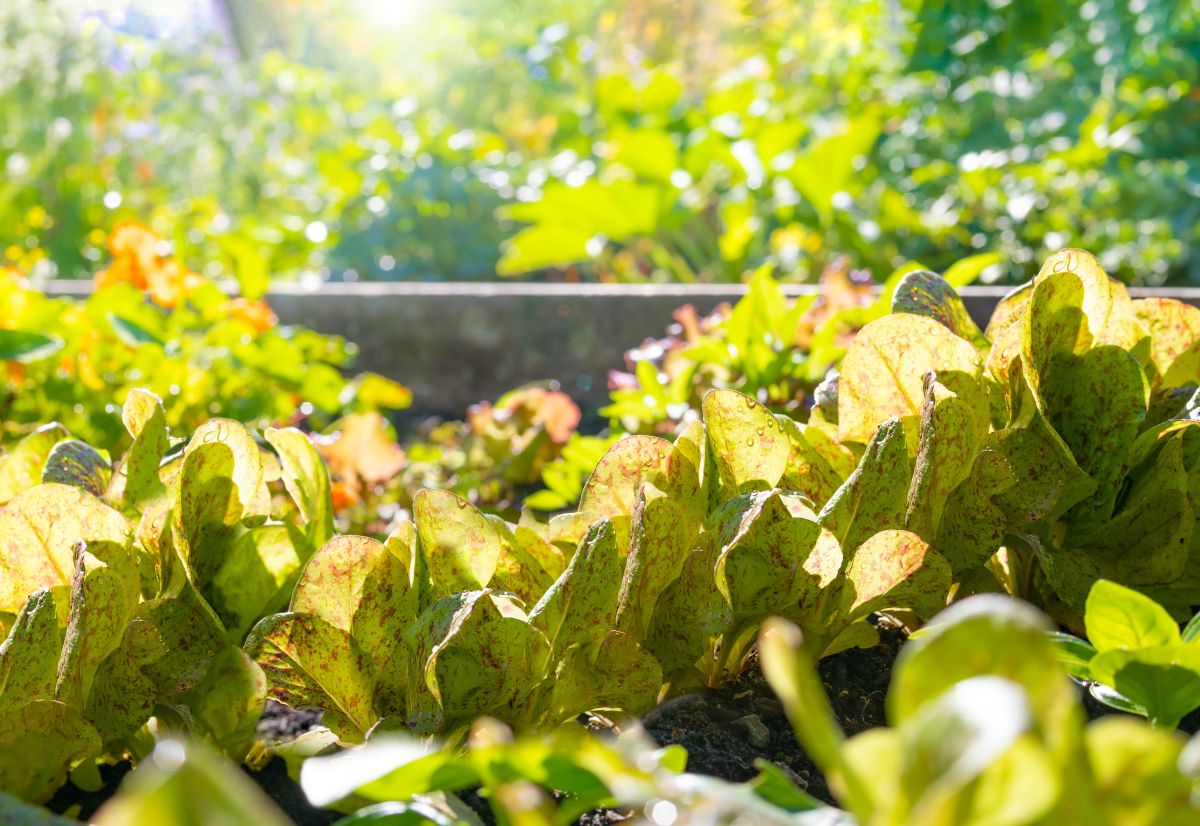
If the weather gets very hot, some plants will stop producing vegetables, even though they are still alive and well. Tomatoes are one of the most notable examples of this, but other vegetables like peppers, zucchini, squash, and others will take a break, too.
The thing to know is that for many vegetables, it’s a break, not a full stop. It’s typical for vegetables to either stop producing blossoms, drop their flowers, or even drop their fruit when the thermometer tops 90 consistently. High heat can sometimes “cook” pollen as well, which means the blossoms don’t pollinate, and the fruit won’t set.
If temperatures don’t drop or change much at night, you might see this happen, too. However, when temperatures moderate and return to something a little more normal, the plants should, too. So, before you give up on your plants, give them some time and see what happens when it’s not so hot. After all, none of us like working that hard in heat that high!
7. Keep it watered. Consistently.
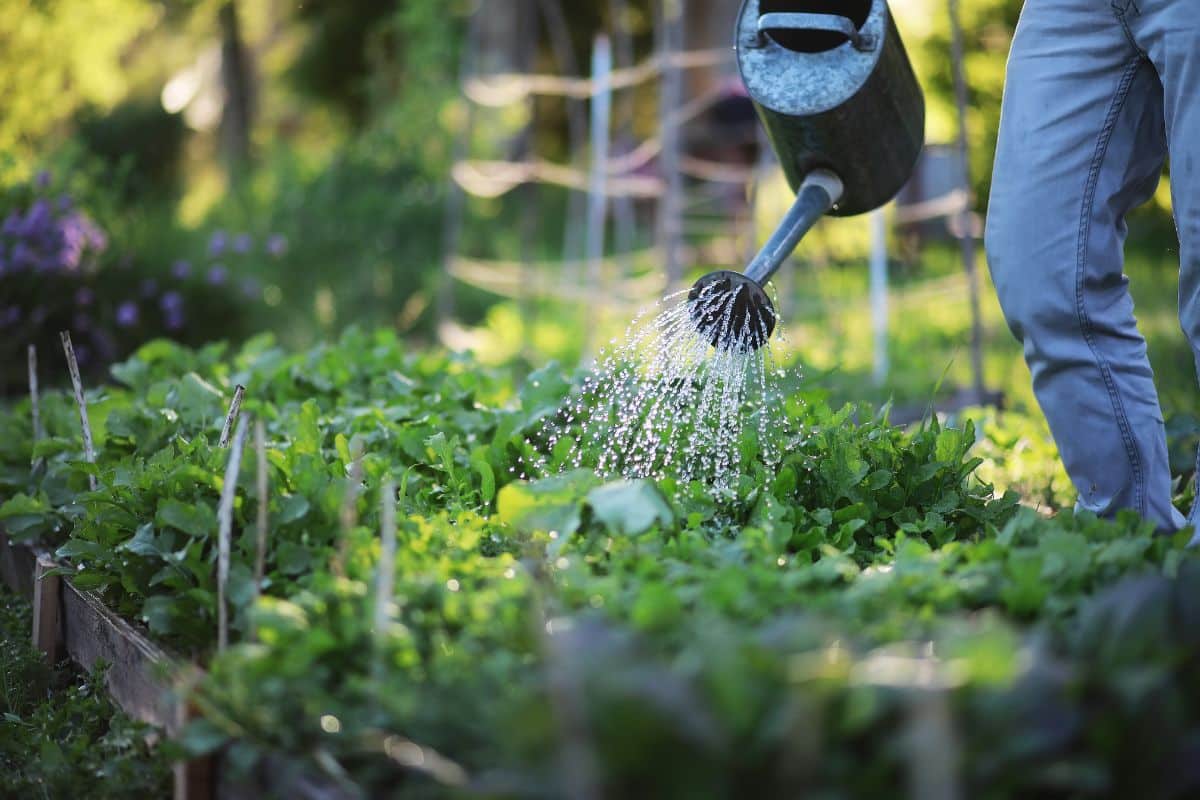
Of course, you know your garden needs water, but did you know that inconsistent water can cause problems with fruit set?
The problem here is mostly related to plant stress. When plants are stressed, even if they don’t die, they might drop their blossoms or drop their fruit. High stress for a prolonged period can make the plant drop all of its blossoms and stop producing entirely. So if at all possible, avoid letting your plant get that stressed.
When the rain and Mother Nature don’t provide enough water, water your plants once or twice a week. Water them deeply and thoroughly. Remember that regular deep watering is much better than frequent, shallow watering. It is what will keep your plants in production.
8. Keep on top of insects and disease.
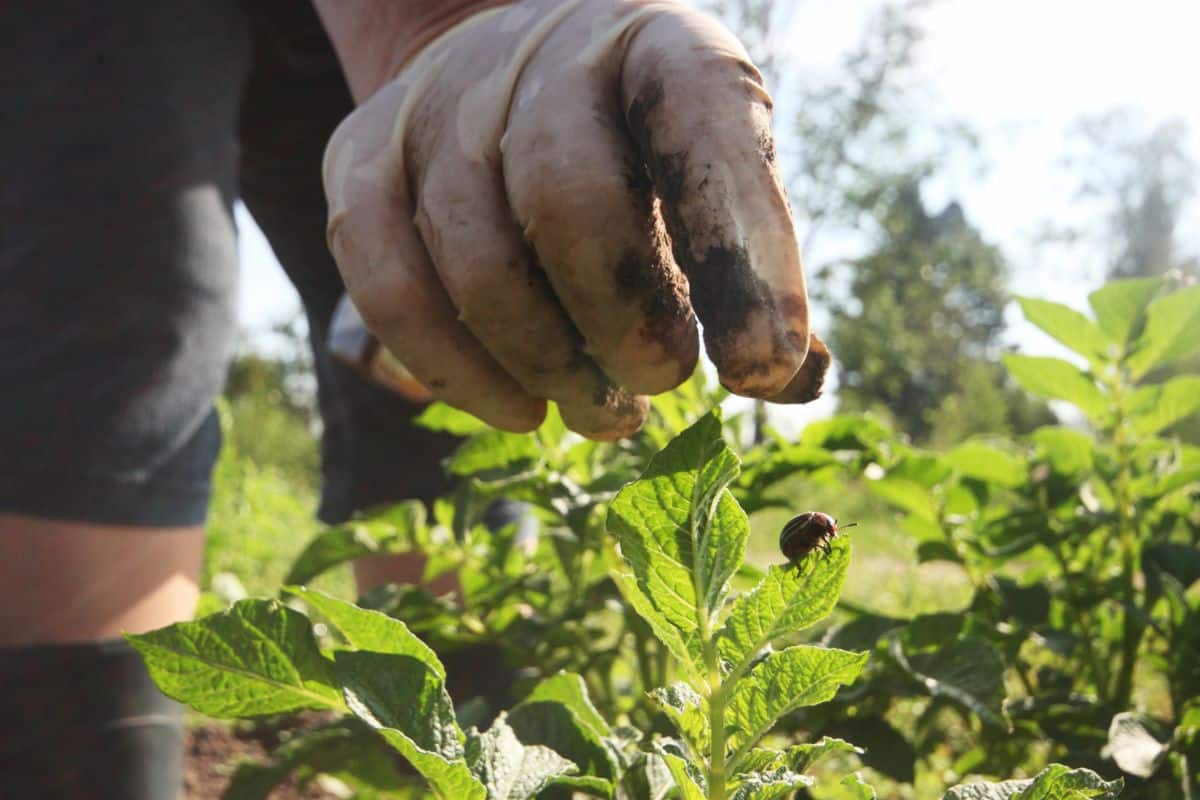
Insects and disease can cause high levels of stress on plants, too. It can also degrade their systems and functions, interfering with their ability to uptake and move water and nutrients. If the plant can’t take care of itself, it can’t take care of its produce; it can’t even produce it, to begin with.
It is best to stop insects and diseases at the first sign. While healthy, strong plants can usually deal with and overcome some level of insect and disease pressure, you don’t want these things to get out of control—and they can do so quickly, seemingly overnight.
9. Weed control matters.
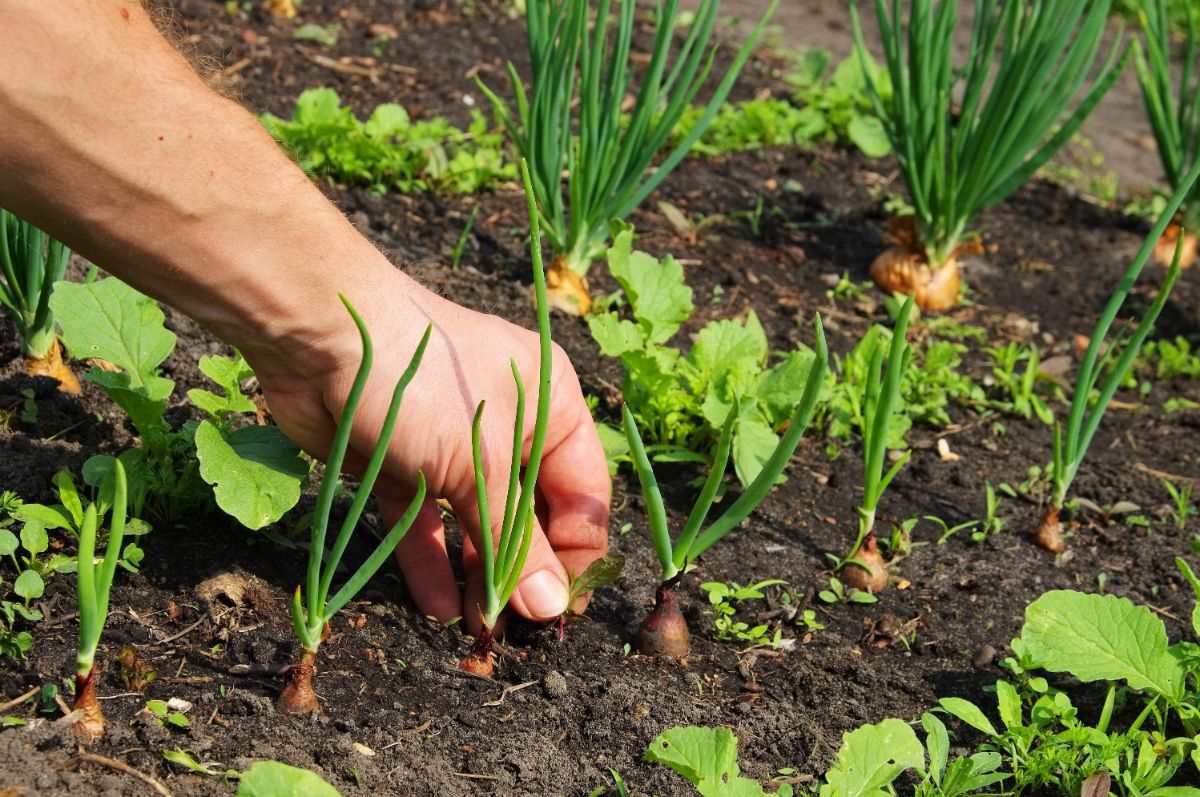
Weeds create too much competition for vegetable plants. Vegetables need a lot of nutrients and water to produce. Weeds steal these away from them. Once they’re used up, unless they’re replenished, there’s simply nothing left for your vegetables. Weeds also hinder airflow, which is a major contributor to plant diseases, many of which are soil-borne and caused by fungus or mildew spores—things that thrive in the damp and moist and die when they are dried out by good airflow.
10. Succession plant one-timers.
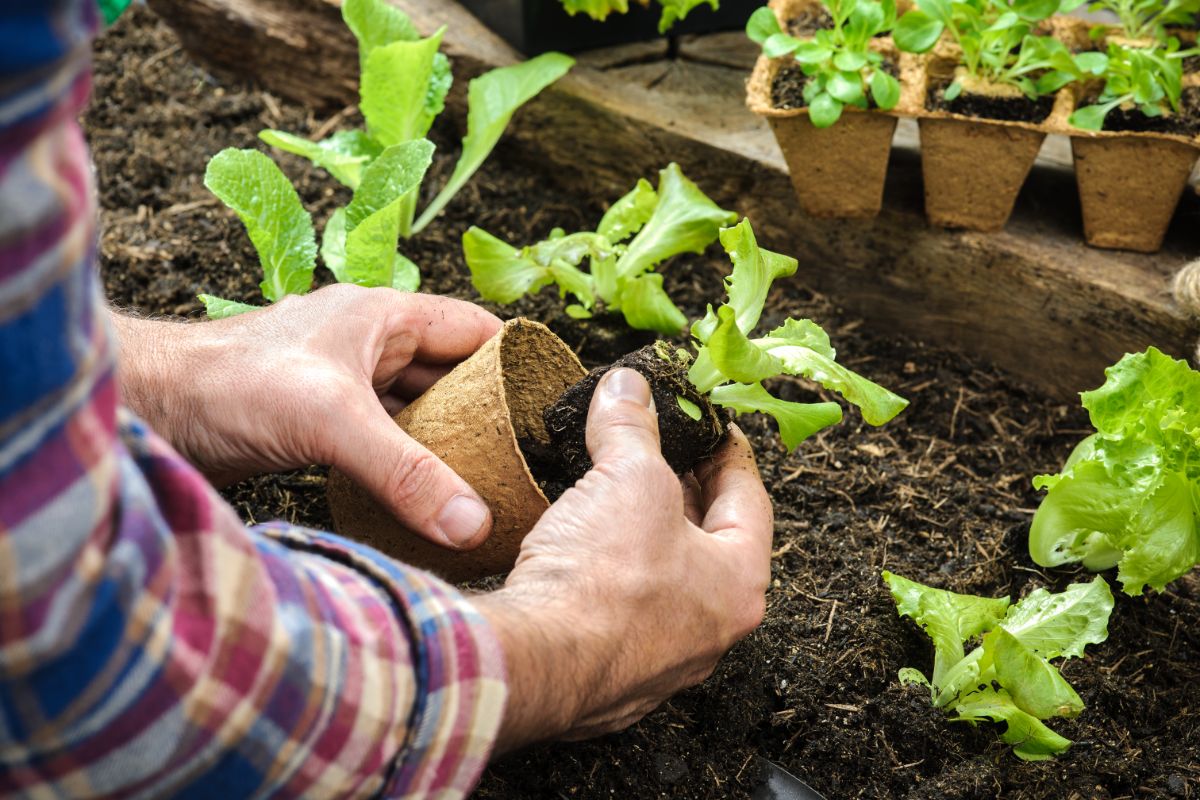
Plan ahead for succession planting. This goes back to number one, and knowing what type of vegetable or fruit you are growing is capable of. Root vegetables, for example, can’t give you more than the original single root. Lettuces and greens, for the most part, will only give you a single (or, if you’re lucky, maybe two) cuttings. Head lettuces and other heading plants like cabbage and cauliflower are mostly one-and-dones. If you want to keep harvesting these types of plants beyond that, you’ll need to have a succession crop started.
Staggering plantings every couple of weeks or so will give you a crop coming up when the first harvest is done. You can also plant a “fall garden,” which is a garden that is harvested in the fall but is really planted, for the most part, during the later part of the summer to get it started and give it time to mature.
Plants You Can Keep Producing for Long Periods

Following is a list of some of the more common vegetables that will continue to produce for an extended period of time:
- Broccoli: harvest side shoots after the main head
- Cabbage: cabbage is not a constant producer, but you can prolong its harvest for a little while by cutting an X in the stem after you harvest the main head—this will grow three or four small heads, which you can harvest and eat
- Beans: bush beans are mostly determinate, but most pole beans are indeterminate and will continue to produce beans as long as you keep them picked
- Peas: peas can produce for about a month; as long as you keep them picked and the weather stays cool, they will stop producing and die back in hot weather. They are a good candidate to replant for a fall harvest.
- Cucumbers: pick every 2 to 3 days, or more often, if necessary, at the peak of the growing season; healthy plants will continue to produce, but may slow as days shorten, plants age and the weather turns cooler
Other plants that should keep growing with good, regular care and consistent harvesting are:
- Indeterminate tomatoes
- Peppers
- Okra
- Summer squash and zucchini
- Eggplant
- Leaf lettuce
- Kale
- Asparagus (limited season and finishes early)
- Spinach (limited by heat)
- Arugula
- Swiss chard
- Collard greens
- Rhubarb
- Most herbs
*This is not an exhaustive list but hits most of the more common vegetable plants. Have one to add? Or a tip to contribute? Leave it in the comments!

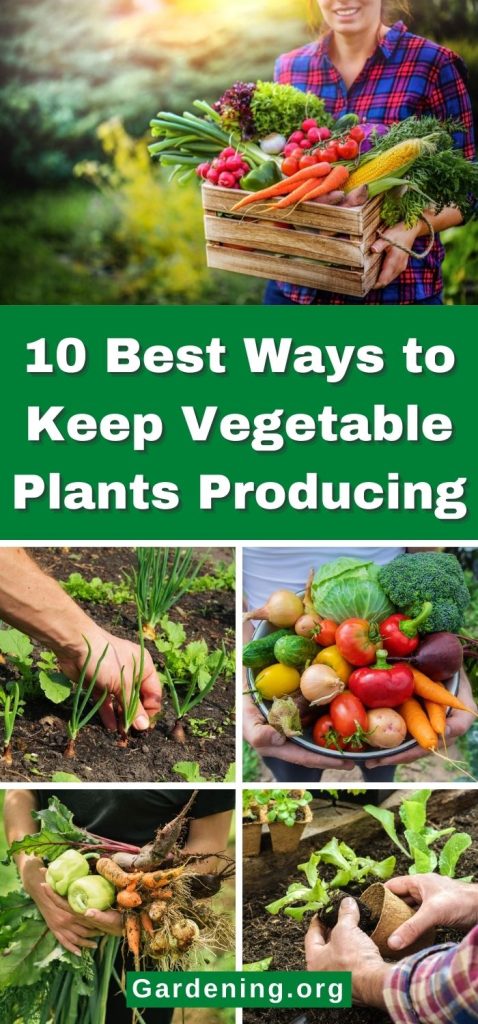
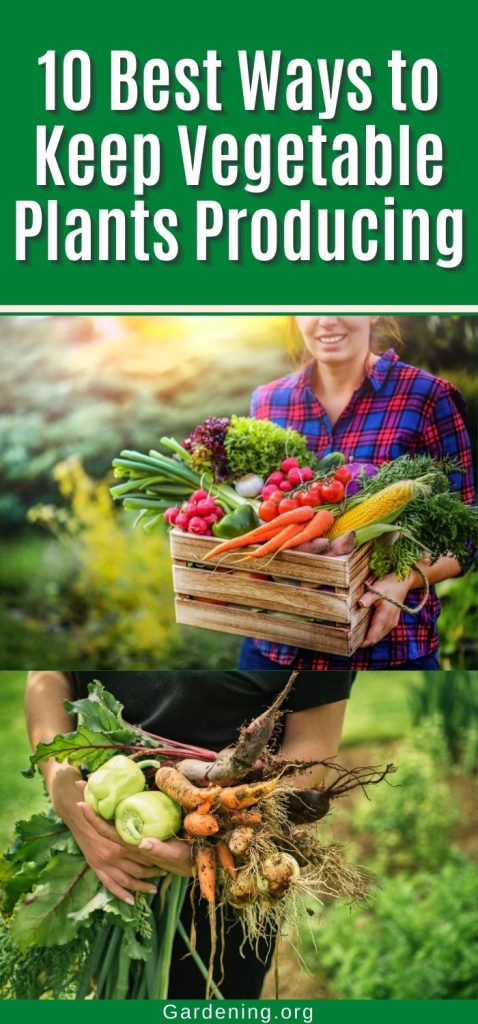
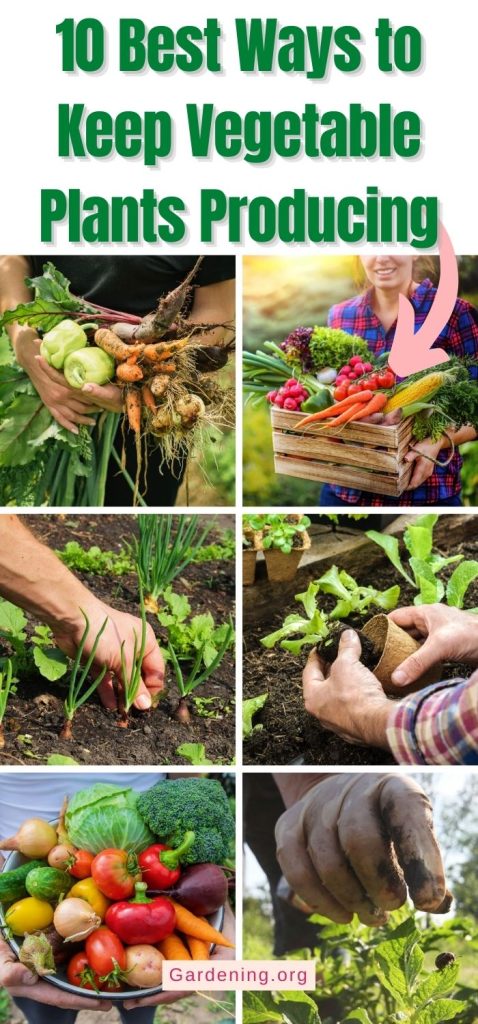
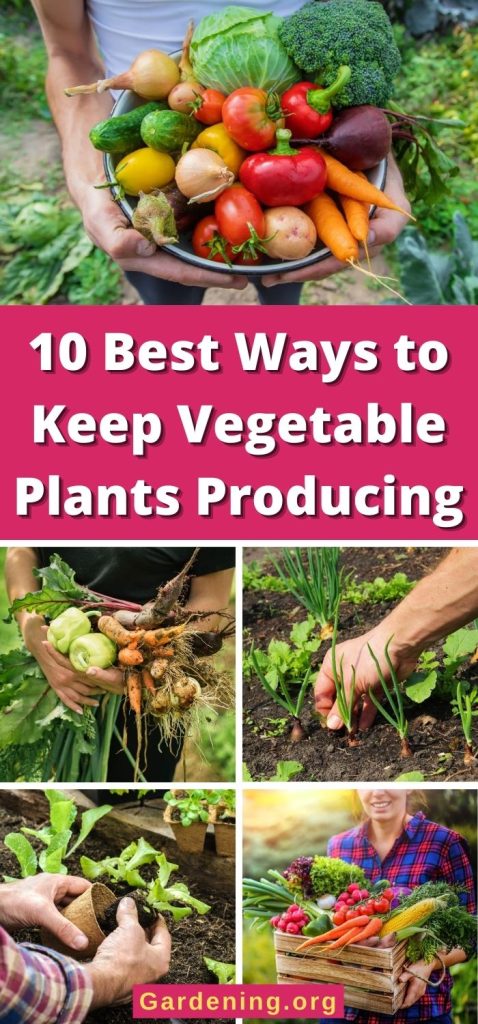




Leave a Reply